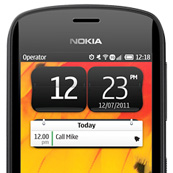Camera historians will probably reflect back on 2012 as a banner year for digital photography technology. But they probably won’t cite a traditional DSC or DSLR as being 2012’s highlight. Rather, the Nokia 808 PureView could be recognized as the device that flipped the idea of digital photography up onto its head – its 41-megapixel sensor and other jaw dropping specs helped shrink the image quality gap between smartphone cameras and DSCs.
The PureView especially succeeded at improving cellphone camera image quality by limiting noise, capturing infinitely more details than competing cellphone or tablet cameras, and far exceeding the competition in low light conditions.
However, the PureView’s small exposure troubles in high contrast images, and its very slight color casting and color shading flaws in outdoor settings illustrate that the smartphone is not perfect – cellphone and tablet cameras still have a lot to accomplish to meet the quality of the best DSCs.
Still, the PureView’s camera innovation seems like a watershed moment within the broader camera and photography world. It reveals to consumers, and the tech industry at large, what is possible with camera-smart phone technology. The Nokia smartphone also demands traditional camera manufacturers take serious notice of the mounting competitive challenge from mobile devices, especially as mobile manufacturers increase their emphasis on camera image quality and innovation.
Photo Pros
- Superb detail preservation, even in challenging low light conditions.
- To date, it is the best performing smartphone at fending off noise.
- Rich and luxurious color production.
- Excellent flash.
- Cool DSC-like camera features.
Video Pros
- In bright lighting, the PureView produces video with nice colors and good detail preservation.
- Valuable video stabilization in bright and dim lighting.
Photo Cons
- Small exposure problems when photographing in strong outdoor lighting conditions.
- Autofocus can be better, especially at close range.
- Slight reddish cast in low light tungsten environments.
Video Cons
- Very noisy video in low lighting.
- Autofocus is slow and not very reactive.
- Stabilization does not correct jello effect. It is too sensitive to subject movement.





DXOMARK encourages its readers to share comments on the articles. To read or post comments, Disqus cookies are required. Change your Cookies Preferences and read more about our Comment Policy.